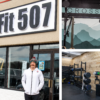
As we edge closer to 2025, the commercial real estate landscape is evolving rapidly, driven by changing market dynamics, technological advancements, and shifting consumer preferences. For businesses and investors alike, staying ahead of these trends is crucial for making informed decisions and capitalizing on new opportunities.
Here’s a look at the top commercial real estate trends.
Hybrid Workspaces Are Here to Stay
The hybrid work model, which gained prominence during the pandemic, continues to reshape office space requirements. We’ll see more businesses adopting flexible workspaces that accommodate both in-office and remote work. This shift will likely reduce the demand for traditional, large office spaces while increasing the need for smaller, more adaptable spaces that serve multiple purposes. Expect a rise in co-working spaces and office layouts designed to foster collaboration, even in a hybrid environment.
Technology Integration and Smart Buildings
Technology continues to transform commercial real estate, with smart buildings becoming more commonplace. In the near future, expect a surge in the adoption of IoT (Internet of Things) technologies, which enable better control of building systems like lighting, heating, and security. These smart technologies improve energy efficiency and enhance the tenant experience by offering more personalized and responsive environments.
Adaptive Reuse and Repurposing of Spaces
As the demand for traditional retail and office spaces fluctuates, the trend of adaptive reuse is gaining momentum. We’ll see more developers repurposing underutilized or obsolete buildings into new, functional spaces. Think of old warehouses transformed into trendy office spaces or vacant retail stores converted into mixed-use developments. This approach not only revitalizes communities but also provides cost-effective solutions for meeting current market demands.
Focus on Wellness and Health-Oriented Spaces
Health and wellness have become top priorities for businesses and employees alike, influencing the design and function of commercial spaces. In late 2024 and beyond, expect to see more commercial properties incorporating features that promote well-being, such as improved air quality systems, natural light, green spaces, and wellness amenities like fitness centers and meditation rooms. Properties that prioritize occupant health will be more attractive to tenants looking to support their employees’ well-being.
Urbanization and Suburban Growth
While urban centers remain critical hubs for commercial activity, there’s a growing trend toward suburban expansion. As remote work allows more flexibility in where people live and work, suburban areas are seeing increased demand for commercial spaces. We might see more businesses setting up shop in suburban locations, driven by lower costs, easier commutes, and the desire for more space. This trend could lead to the revitalization of suburban downtowns and the development of new commercial corridors.
Demand for Mixed-Use Developments
Mixed-use developments, which combine residential, commercial, and recreational spaces, will continue to be a significant trend. These developments offer convenience and community, catering to the growing demand for live-work-play environments. As cities and towns look to optimize space and reduce commutes, mixed-use properties will be in high demand, providing opportunities for developers to create vibrant, integrated communities.
Shifts in Retail Real Estate
The retail sector is undergoing a transformation, with e-commerce continuing to dominate. Looking ahead, brick-and-mortar retail will focus more on experiential shopping and omnichannel strategies. Retail spaces that offer unique, in-person experiences or serve as fulfillment hubs for online orders will thrive. Additionally, there will be a growing trend of smaller, more specialized retail spaces that cater to niche markets, allowing retailers to differentiate themselves in a crowded market.
As we move toward 2025, the commercial real estate landscape is set to experience significant changes, driven by new technologies, evolving work habits, and a growing focus on sustainability and well-being. For businesses, investors, and developers, staying ahead of these trends will be key to navigating the market successfully. Whether embracing hybrid workspaces, investing in multi-use buildings, or exploring new opportunities in suburban areas, the future of commercial real estate is full of potential.
At Bluewater Properties, we’re committed to helping you stay ahead of the curve. Whether you’re looking to lease, buy, or develop commercial property, our team of experts is here to guide you through the trends and opportunities. Contact us today to learn more about how we can help you achieve your real estate goals.



